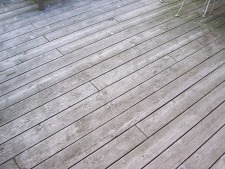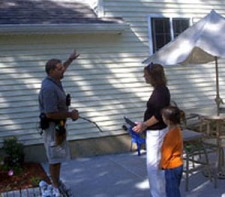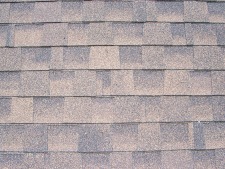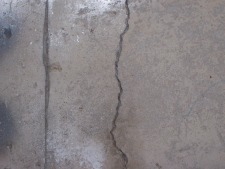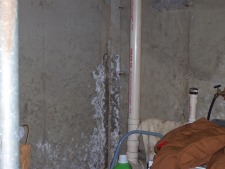|
|



|
| |
Tips & InformationDECKS AND PORCHES: Rain, snow and ice will seriously damage exposed wood decks and porches. We recommend applying a wood preservative every year and replacing all decaying wood members with pressure treated wood. An improperly built deck or porch can become a breeding ground for fungi and introduce infections to the house. The most common decay encouraging problem is the lack of space between the deck planks. Debris such as leaves fall into the cracks between the planks and become trapped. They absorb rain water and the moist debris encourages fungus infections in the joist and planks. It's important to take preventative measures to add to the deck or porches life.
|
TIPS FROM R.J.D.The age of various house members/units is crucial in the understanding of their remaining useful life. We have put together a list of some typical age/life expectancies. These are general statements, for there are many factors which determine the life of a house member/unit that are impossible to detect on a visual inspection. Some members/units may perform beyond their expected life, while others may need replacement sooner.
Click here to see our helpful life expectancy list |
Tips From R.J.D.R.J.D Home & Property Inspections strictly adheres to the State of Connecticut Department of Consumer Protection Home Inspector Regulations and the Code of Ethics. Our dedication to honesty and integrity assures you a concise, comprehensive and accurate Home Analysis Report of conditions as we observe them at the time of our visual inspection.
|
Tips From R.J.D.All exterior surfaces of untreated wood require regular maintenance and painting or staining. Any wood members that come into contact with dirt should be pressure treated and any condition where the earth comes into contact with untreated wood should be eliminated as it will promote wood rot and invite wood destroying insects fairly quickly.
|
Tips From R.J.D.Asphalt composite shingles have a 15-30 year design life, slate roofing 50 plus years, and wood shingle 10-50 years. Roll roofing 6-12 years. Built-up (flat) roofing 15-20 years. All roof coverings require maintenance. |
Tips From R.J.D.Cracks in poured concrete or concrete block, Stone, or Brick foundation walls can result from shrinkage, differential settlement, lateral pressure on the wall by the soil, or poor workmanship. It is not uncommon to find short cracks in the foundation walls. Cement block, Brick, and Stone foundations have a greater chance of water seepage then poured concrete foundations due to the numerous joints. We recommend all cracks be sealed as a precautionary measure against water and insect penetration. Since it is not possible to determine from a single visual inspection whether the cracks differential settlement is active or dormant, the wall should be checked for incremental movement over a period of time, usually several months or years.
|
Tips From R.J.D.Some form of basement dampness exists in most homes in our New England area. It can range from slight efflorescence to high water rust lines on lally columns. Often, however, in houses which are being offered for sale, the visible signs on the interior of a basement which would indicate a past or present water and or moisture problem are concealed. For example, an area may be painted over, or basement storage may be piled against a wall where a problem has occurred or if it has been dry for a period before the Inspection, signs of past water penetration may not be visible. Our experience shows that substantial dampness can be eliminated with proper diversion of roof and ground water. A damaged gutter or leader discharging into a low area at the foundation will be a major source of dampness in the basement. We note dampness in our reports, and attempt to determine its source and recommend a solutions.
|
Wood Destroying Insects | 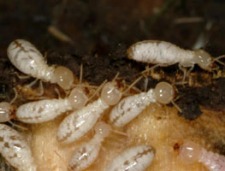 | |
General Information About Wood Destroying Insects:
Termites - Termites are tough, determined, and highly efficient. And chances are you'll see no evidence of their work until structural damage has been done. Subterranean termites, the most common kind, live in colonies in the soil, from just below the surface to as much as 12 feet down. Each colony is built around a King and a Queen,whose sole job is reproduction. Worker Termites " commute " in what appears to be a mud tunnel between the colony and sources of food, including wood fibers and other forms of cellulose. These Workers rarely break through the surface of wood instead they hollow it out from the inside making it difficult to detect.
Carpenter Ants - Are chiefly a cosmetic nuisance. They nest in wood already softened by decay and emerge to forage for food. These Ants must emerge from their nest to forage, making them selves very visible. They are among the largest ants in the United States, worker ants varying in size between 1/4 to 1/2 inch long. They are black or black with a reddish brown midsection.
|
|
|
|
|

